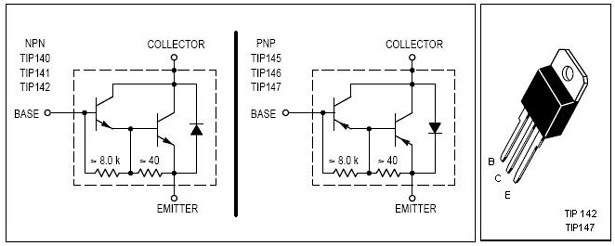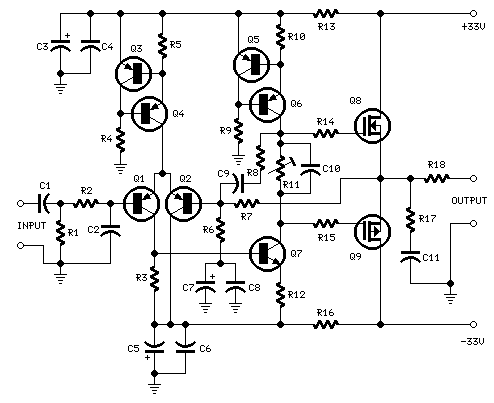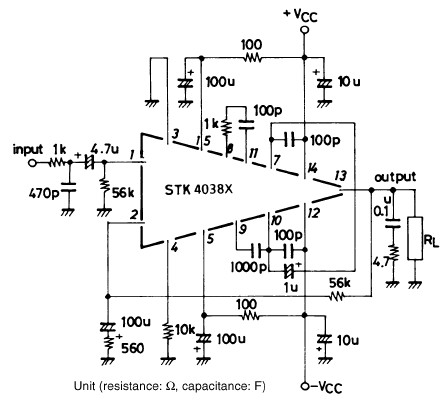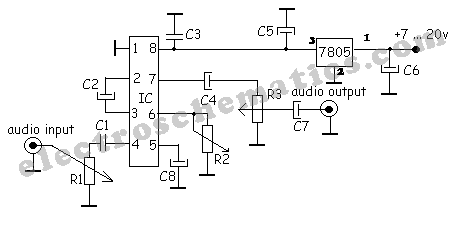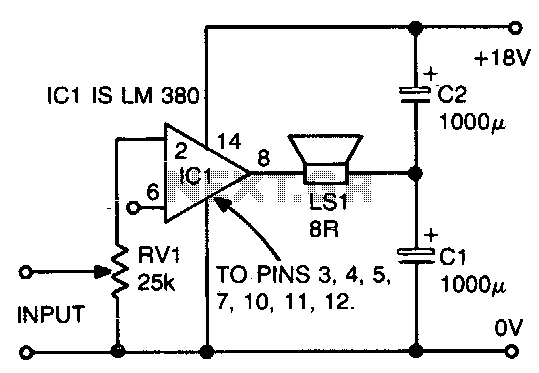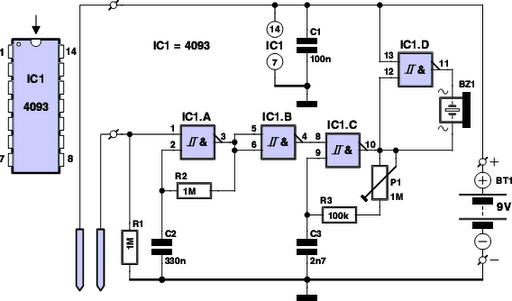
200W Hybrid Audio Amplifier Circuit
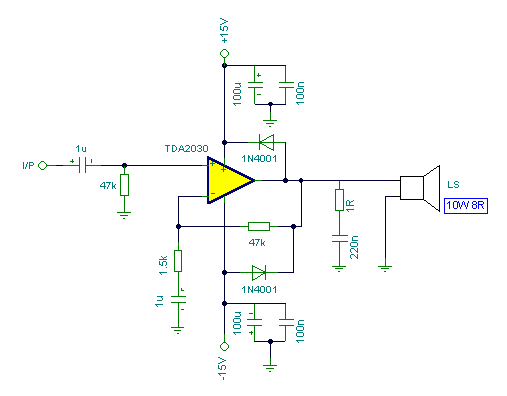
Connecting two TDA2030 through inexpensive power transistors allows for the creation of an amplifier capable of delivering higher power. This can be achieved by utilizing the component values specified in the schematic.
To implement this circuit, two TDA2030 integrated circuits are utilized as the main amplification components. Each TDA2030 can deliver up to 14 watts of output power into a load of 4 ohms, but by connecting them in a configuration that includes additional power transistors, the overall output power can be significantly increased.
The circuit typically includes a power supply that provides the necessary voltage for the TDA2030s, usually around ±14 to ±20 volts, depending on the desired output power and load impedance. The output stage consists of complementary power transistors, such as NPN and PNP types, which are connected to the outputs of the TDA2030s. These transistors are responsible for driving the load with higher current, allowing the amplifier to deliver more power without distortion.
In the schematic, it is essential to include appropriate biasing resistors for the transistors to ensure they operate in their linear region. Additionally, capacitors may be used for coupling and decoupling purposes to stabilize the amplifier and prevent unwanted oscillations. Feedback resistors are also critical to maintain the desired gain and frequency response of the amplifier.
The input to the amplifier can be connected to audio sources, and it is advisable to include a volume control potentiometer to adjust the signal level entering the amplifier. Proper heat sinking for the TDA2030s and the power transistors is necessary to prevent overheating during operation, especially at higher power levels.
Overall, this configuration allows for a robust amplifier design that can drive larger speakers or provide greater sound output in various audio applications. The careful selection of component values and layout will ensure optimal performance and reliability of the final amplifier circuit.Connecting two TDA2030 thru cheap power transistors we can create a amplifier wich can deliver a higher power. With the components value from the schematic.. 🔗 External reference
To implement this circuit, two TDA2030 integrated circuits are utilized as the main amplification components. Each TDA2030 can deliver up to 14 watts of output power into a load of 4 ohms, but by connecting them in a configuration that includes additional power transistors, the overall output power can be significantly increased.
The circuit typically includes a power supply that provides the necessary voltage for the TDA2030s, usually around ±14 to ±20 volts, depending on the desired output power and load impedance. The output stage consists of complementary power transistors, such as NPN and PNP types, which are connected to the outputs of the TDA2030s. These transistors are responsible for driving the load with higher current, allowing the amplifier to deliver more power without distortion.
In the schematic, it is essential to include appropriate biasing resistors for the transistors to ensure they operate in their linear region. Additionally, capacitors may be used for coupling and decoupling purposes to stabilize the amplifier and prevent unwanted oscillations. Feedback resistors are also critical to maintain the desired gain and frequency response of the amplifier.
The input to the amplifier can be connected to audio sources, and it is advisable to include a volume control potentiometer to adjust the signal level entering the amplifier. Proper heat sinking for the TDA2030s and the power transistors is necessary to prevent overheating during operation, especially at higher power levels.
Overall, this configuration allows for a robust amplifier design that can drive larger speakers or provide greater sound output in various audio applications. The careful selection of component values and layout will ensure optimal performance and reliability of the final amplifier circuit.Connecting two TDA2030 thru cheap power transistors we can create a amplifier wich can deliver a higher power. With the components value from the schematic.. 🔗 External reference
